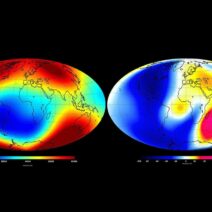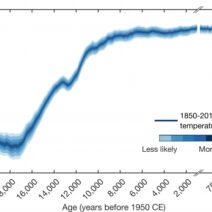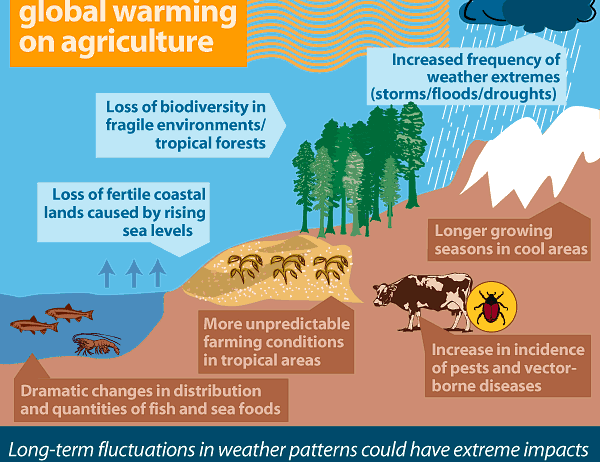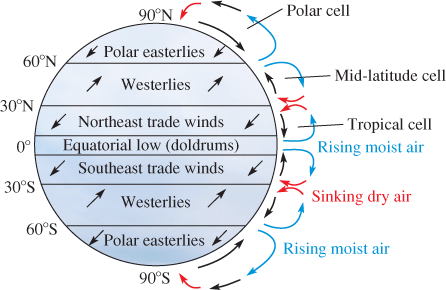Climate change is an omnipresent specter hovering over the agricultural landscape, transforming it in ways that are profoundly alarming. The ramifications of these alterations extend far beyond merely the farmers in the field; they knit themselves into the very fabric of our society, affecting food security, ecosystems, and economic stability. This article unpacks the multifaceted relationship between climate change and agriculture, elucidating the myriad ways climate perturbations are reshaping farming practices and threatening the integrity of our plates.
The Changing Climate: An Overview
To comprehend the impact of climate change on farming, one must first grasp its fundamental elements. Rising average temperatures, erratic rainfall patterns, and an increase in the frequency and intensity of extreme weather events significantly strain agricultural systems. These changes arise from the accumulation of greenhouse gases in the atmosphere, driven largely by anthropogenic activities such as fossil fuel combustion and deforestation. As atmospheric temperatures continue to escalate, existing farming norms face unprecedented challenges.
Crop Yields and Viability
One of the most immediate concerns related to climate change is the erosion of crop yields. Staples like wheat, rice, and maize are extremely sensitive to temperature variations. Studies indicate that for every degree Celsius rise in global temperature, the yields of staple crops could diminish by up to 10%. Furthermore, fluctuating precipitation patterns disrupt irrigation schedules and deplete essential water resources, particularly in regions already facing water scarcity. Shorter growing seasons, combined with the emergence of pests and diseases previously kept at bay by colder climate conditions, aggravate food insecurity. This precarious balance necessitates innovative agricultural practices and adaptive strategies.
Soil Degradation and Health
As climate change advances, soil health is jeopardized by erosion and desertification. Increased rainfall intensity can lead to the washing away of nutrient-rich topsoil, rendering formerly fertile lands barren. Additionally, the overuse of chemical fertilizers and pesticides—often a reaction to declining soil productivity—further degrades land quality. A vicious cycle ensues, wherein climate shifts exacerbate soil depletion, leading farmers to rely on unsustainable practices. Restoring soil health requires not only understanding these dynamics but also integrating regenerative agricultural methods, such as cover cropping and agroforestry, that can contribute to more resilient ecosystems.
The Role of Technology and Innovation
In the face of such challenges, technological advancements become pivotal. Precision agriculture is emerging as a beacon of hope, utilizing data analytics, sensor technologies, and artificial intelligence to optimize inputs and enhance yield sustainability. Drones monitor crop health, while climate models predict weather patterns to assist farmers in making informed decisions. Biotechnological innovations, such as genetically modified organisms (GMOs) designed to withstand extreme weather—such as drought-resistant corn or flood-tolerant rice—have also been proposed as potential solutions. However, the ethical implications and societal acceptance of such technologies remain contentious.
Adaptation Strategies
Farming communities must cultivate adaptability to weather the turbulent shifts wrought by climate change. Diversification of crops can mitigate risks associated with yield failures, enabling farmers to buffer against climatic unpredictability. Crop rotation, intercropping, and polyculture practices not only enhance resilience but also improve soil health and promote biodiversity. Investment in local seed banks that prioritize heirloom varieties can safeguard traditional agricultural wisdom while providing viable options tailored to evolving climate conditions.
Economic Implications
Economic repercussions of climate change on agriculture are profound and far-reaching. As crop yields fluctuate due to erratic weather patterns, prices inevitably rise, threatening the affordability of basic foodstuffs for consumers. Moreover, smallholder farmers—who comprise a significant portion of the global agricultural workforce—are particularly vulnerable to climate-related shocks; they often lack the financial resources to invest in adaptive technologies or diversified cropping systems. This scenario perpetuates a cycle of poverty and food insecurity, necessitating targeted policies that support vulnerable populations.
Global Food Security and Sustainability
The specter of climate change casts a long shadow over global food security. As agriculture grapples with shifting environmental conditions, the prospect of widespread food shortages looms large. The United Nations has set ambitious Sustainable Development Goals aimed at eradicating hunger, yet achieving such targets in a warming world is increasingly precarious. Enhanced collaboration among governments, NGOs, and the private sector is essential—sharing knowledge, resources, and technology will be key. Creating a shared vision for sustainable food systems, rooted in principles of equity and ecological integrity, stands as a pivotal challenge for future generations.
Conclusion: A Call to Action
As climate change inexorably reshapes the agricultural landscape, it shines a glaring spotlight on the interconnectedness of environmental health and food systems. The time for complacency has long since passed. By promoting sustainable agriculture, investing in adaptive practices, and reevaluating consumer habits, society can work collectively to mitigate the impacts of climate change. Awareness and action are now more crucial than ever; the future of our plates and the health of our planet depend on the choices we make today.



